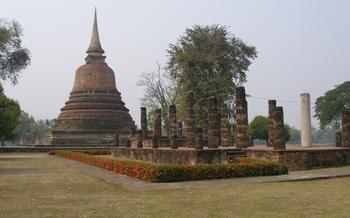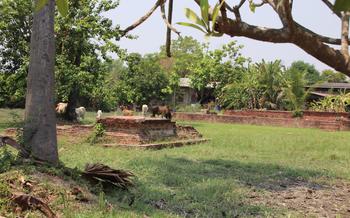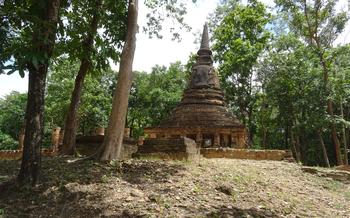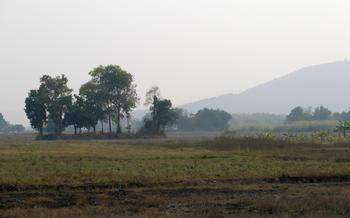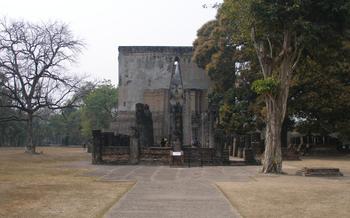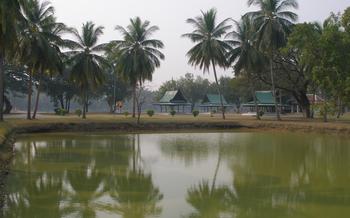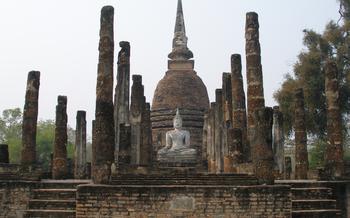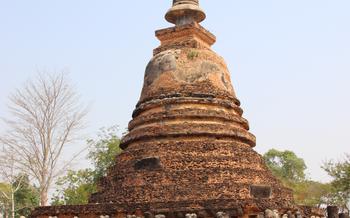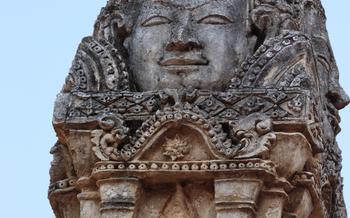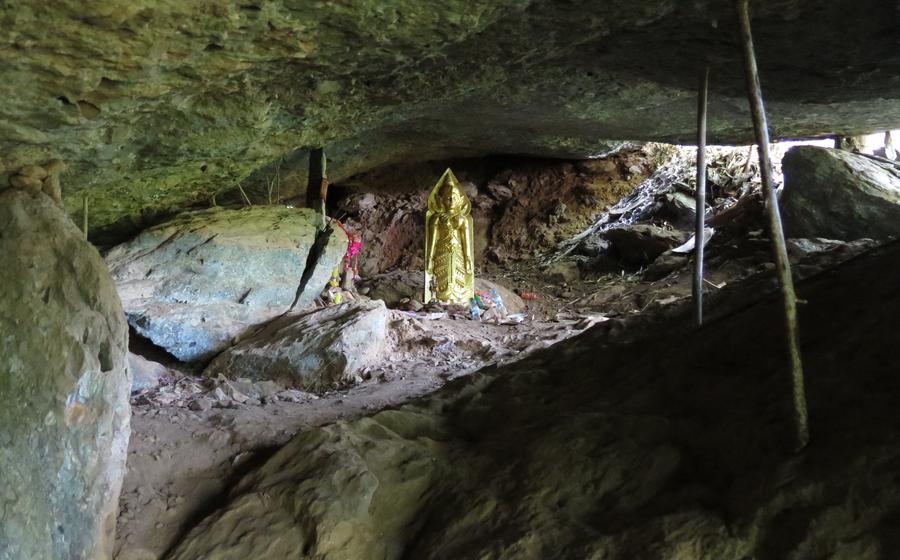
Ramkhamhaeng National Park
- Getting to Ramkhamhaeng National Park
- Accommodation Options Near the Park
- Must-See Attractions Within the Park
- Hiking Trails and Trekking Adventures
- Camping and Picnicking Facilities
- Wildlife Watching and Birdwatching Opportunities
- Swimming and Water Activities
- Visiting the Park with Children
- Cultural Experiences and Local Traditions
- Responsible Tourism Practices: Preserving the Natural and Cultural Heritage of Ramkhamhaeng National Park
- Planning Your Itinerary: Suggested Timelines
- Packing Essentials for a Park Visit: Be Prepared for Adventure
- Photography Tips and Inspiration
- Insider Tip: Hidden Gem and Secret Spots
Sukhothai's First National Park and Its Historical Significance
Ramkhamhaeng National Park holds a significant place in Thai history as Sukhothai's first national park, established in 198Its historical significance is deeply intertwined with the Sukhothai Kingdom, which flourished in the 13th and 14th centuries. The park encompasses the ruins of ancient temples and settlements, offering visitors a glimpse into the kingdom's rich cultural heritage.
Diverse Landscapes and Natural Wonders
The park's diverse landscapes showcase a harmonious blend of forests, mountains, and waterfalls. Visitors can immerse themselves in the lush greenery of tropical rainforests, ascend majestic mountains, and marvel at the cascading waters of picturesque waterfalls. The park's natural beauty is a testament to Thailand's incredible biodiversity and provides a sanctuary for numerous plant and animal species.
Rich Biodiversity and Conservation Efforts
Ramkhamhaeng National Park is home to a diverse array of flora and fauna, including a variety of plant species, birds, mammals, and reptiles. The park's diverse ecosystems provide habitats for endangered species, making it crucial for conservation efforts. Visitors can contribute to the park's conservation initiatives by adhering to responsible tourism practices and supporting local conservation organizations.
Getting to Ramkhamhaeng National Park
Ramkhamhaeng National Park is situated in the Si Satchanalai district, approximately 60 kilometers from Sukhothai city. Reaching the park is relatively straightforward, with various transportation options available. Visitors can rent a car or motorbike, which offers the flexibility to explore the park at their own pace. Taxis and tuk-tuks can also be hired for a more comfortable journey. For those on a budget, buses are a convenient and affordable option, departing from Sukhothai city's main bus station.
Upon arrival at the park, visitors will be required to pay an entrance fee. The exact cost may vary depending on the type of vehicle and the number of passengers. Additional charges may apply for specific activities, such as camping or guided tours. It is advisable to check with the park authorities or refer to their official website for the most up-to-date information on fees and charges.
The park's operating hours are generally from 8:00 AM to 4:00 PM daily. However, it is essential to note that these hours may be subject to change, especially during holidays or special events. Visitors are advised to plan their visit accordingly and check with the park authorities for any seasonal variations in operating hours.
Accommodation Options Near the Park
When planning your visit to Ramkhamhaeng National Park, various accommodation options are available to suit different travel styles and budgets.
For those seeking convenience and immersion in nature, the park offers guesthouses and camping facilities within its boundaries. The guesthouses provide basic but comfortable rooms, allowing visitors to stay close to the park's attractions and enjoy the tranquility of the surroundings.
For a more comfortable stay, numerous hotels and resorts are located near the park's entrance. These offer a range of amenities, including air-conditioned rooms, private bathrooms, and swimming pools, catering to those who prefer a higher level of comfort.
For a truly authentic experience, consider a homestay with a local family. Homestays offer a unique opportunity to immerse yourself in the local culture, learn about traditional ways of life, and enjoy home-cooked Thai meals.
Budget-conscious travelers can find affordable options in nearby towns and villages. Several guesthouses and hostels offer dorm-style accommodations or private rooms at reasonable prices.
No matter your preference or budget, you'll find suitable accommodation options near Ramkhamhaeng National Park that will enhance your overall experience.
Must-See Attractions Within the Park
Ramkhamhaeng National Park is a treasure trove of natural and historical wonders just waiting to be explored. Step back in time as you wander through the ruins of ancient temples like Wat Khao Phanom Phloeng and Wat Chang Rop, where intricate carvings and crumbling stupas tell tales of Sukhothai's glorious past. Marvel at the sheer power of nature as you stand beneath Namtok Tat Mok and Namtok Sarika, two stunning waterfalls that cascade over rocky cliffs, creating a symphony of sound and mist. Embark on a journey of discovery as you hike to Khao Luang viewpoint, where panoramic vistas of the park's lush forests and distant mountains await. Keep your eyes peeled for hidden caves and unique rock formations like the Pha Daeng cliffs, where nature's artistry is on full display. With every step you take, you'll encounter the wonders that make Ramkhamhaeng National Park a must-visit destination for nature enthusiasts and history buffs alike.
Hiking Trails and Trekking Adventures
Ramkhamhaeng National Park offers a range of hiking trails that cater to different fitness levels and interests. Whether you're a seasoned trekker looking for a challenging adventure or a family seeking a leisurely walk, there's a trail perfect for you.
Beginners and families with young children can opt for the easy trails, which are well-maintained and offer gentle slopes. These trails often lead to scenic viewpoints, waterfalls, or historic sites, making them ideal for a relaxing and enjoyable hike.
For those seeking a more challenging experience, the park offers moderate to difficult trails that traverse rugged terrain, ascend steep hills, and require a good level of fitness. These trails reward hikers with breathtaking panoramic views, secluded waterfalls, and the opportunity to explore the park's hidden corners.
Trail maps and guides are available at the park's visitor center, providing detailed information on trail routes, distances, and points of interest. You can also hire experienced local guides who can lead you on a guided hike, ensuring your safety and sharing their knowledge of the park's flora, fauna, and history.
When embarking on a hike, be sure to pack essentials such as comfortable clothing and sturdy footwear, plenty of water and snacks, a sun hat, sunglasses, insect repellent, and a basic first-aid kit. Remember to stay on designated trails to minimize your impact on the environment and avoid disturbing wildlife.
Camping and Picnicking Facilities
Ramkhamhaeng National Park offers a range of camping and picnicking facilities for visitors who want to immerse themselves in the park's natural beauty. Designated campsites are available within the park, providing a safe and comfortable base for overnight stays. These campsites are equipped with basic amenities such as toilets, showers, and picnic tables.
To camp within the park, visitors must obtain a camping permit from the park headquarters or ranger stations. Permits are issued on a first-come, first-served basis and may require advance reservations during peak season. There is a nominal fee associated with camping permits, which helps to support the park's conservation efforts.
For those who prefer a more rustic experience, there are also designated picnic spots scattered throughout the park. These spots offer scenic views and a tranquil atmosphere, perfect for enjoying a packed lunch or snacks while surrounded by nature. Some picnic spots may have basic facilities like tables and benches, while others are more secluded, allowing visitors to find their own private oasis.
The park also provides barbecue facilities for visitors who want to cook their own meals. Barbecue pits or grills are available at designated picnic areas, allowing visitors to enjoy a delicious outdoor barbecue surrounded by the park's natural beauty.
Whether you choose to camp overnight or simply enjoy a picnic during the day, Ramkhamhaeng National Park offers a range of facilities and opportunities to make your experience comfortable and enjoyable.
Wildlife Watching and Birdwatching Opportunities
Ramkhamhaeng National Park is a haven for wildlife enthusiasts, offering diverse opportunities for birdwatching and wildlife photography. Over 200 species of birds have been recorded in the park, including colorful hornbills, majestic eagles, and various migratory species. Birdwatching hotspots include the park's wetlands, forests, and the scenic Khao Luang viewpoint, where you can spot birds soaring against the backdrop of stunning mountain ranges.
For wildlife photography enthusiasts, the park provides ample chances to capture stunning shots of various animals in their natural habitat. With a bit of patience and luck, you may encounter wild elephants, monkeys, deer, reptiles, and a variety of bird species. Always remember to practice ethical wildlife viewing practices, such as maintaining a safe distance, avoiding disturbing the animals, and using a telephoto lens to minimize disruption.
To enhance your wildlife viewing experience, consider hiring local guides or joining organized wildlife tours. Experienced guides can help you locate wildlife hotspots, provide insights into their behavior, and ensure a safe and responsible wildlife viewing experience.
Swimming and Water Activities
Ramkhamhaeng National Park offers refreshing natural pools and waterfalls that invite visitors to immerse themselves in the cool waters. For those seeking a more active experience, kayaking and canoeing are available, providing a unique perspective of the park's stunning landscapes from the water. Anglers can indulge in fishing at designated spots, casting their lines in search of local fish species. While enjoying these water activities, it is essential to prioritize safety, choosing suitable swimming locations and adhering to water safety guidelines to ensure a safe and enjoyable experience for all.
Visiting the Park with Children
Ramkhamhaeng National Park is an ideal destination for families with children of all ages. The park offers a variety of activities that are suitable and enjoyable for kids, making it a great place to spend a day or two exploring nature and learning about history.
Families can start their day with a visit to the park's Visitor Center, where they can learn about the park's history, geography, and wildlife. The center also has a number of interactive exhibits that kids will love, such as a touch tank where they can learn about the park's aquatic life.
After visiting the Visitor Center, families can explore the park's many trails. There are a variety of trails to choose from, ranging from easy walks to challenging treks. Some of the most popular trails for families include the Pha Daeng Trail, which leads to a series of stunning rock formations, and the Namtok Tat Mok Trail, which leads to a beautiful waterfall.
Families can also enjoy a picnic lunch at one of the park's many picnic spots. There are a number of designated picnic areas, as well as a number of spots where families can simply spread out a blanket and enjoy a meal surrounded by nature.
If your kids are interested in wildlife, be sure to keep an eye out for the park's many animals. The park is home to a variety of birds, monkeys, and reptiles, as well as a number of other animals.
Finally, don't forget to bring your camera to capture all of your family's memories of their day at Ramkhamhaeng National Park. The park is full of beautiful scenery, and there are plenty of opportunities to take amazing photos.
Cultural Experiences and Local Traditions
Ramkhamhaeng National Park offers a glimpse into the rich cultural heritage of Thailand's Sukhothai region. Visitors can experience the local way of life by visiting nearby markets, where they can purchase handmade crafts and souvenirs. Handicraft workshops provide an opportunity to learn traditional skills like pottery and weaving, allowing visitors to connect with the local artisans and appreciate their craftsmanship.
The region is also known for its vibrant festivals and events, which offer a chance to immerse in the local traditions and customs. During these events, visitors can witness colorful processions, enjoy traditional dance performances, and sample delicious local cuisine. To fully immerse in the local culture, consider staying with a local family through a homestay experience. This provides a unique opportunity to learn about their daily lives, customs, and traditions, while also contributing to the local economy.
Responsible Tourism Practices: Preserving the Natural and Cultural Heritage of Ramkhamhaeng National Park
As travelers, we have a responsibility to minimize our impact on the environment and support the local communities we visit. Here are some tips for practicing responsible tourism in Ramkhamhaeng National Park:
-
Minimize Environmental Impact: Reduce waste by carrying reusable water bottles, avoiding single-use plastics, and properly disposing of trash. Conserve water by taking shorter showers and reporting any leaks to park authorities.
-
Support Local Communities: Purchase souvenirs from local artisans and shop at local markets to directly benefit the community. Dine at local restaurants that use fresh, locally sourced ingredients to support the local economy.
-
Respect Cultural Norms: Dress modestly and behave respectfully when interacting with local people. Learn a few basic Thai phrases to show your appreciation for the local culture.
-
Volunteer Opportunities: Get involved in conservation or community development projects to give back to the park and its surrounding communities. Volunteering opportunities may include tree planting, wildlife monitoring, or teaching English to local children.
By practicing responsible tourism, we can help preserve the natural and cultural heritage of Ramkhamhaeng National Park for future generations to enjoy.
Planning Your Itinerary: Suggested Timelines
Whether you have a limited time or want to explore Ramkhamhaeng National Park in depth, there are suggested itineraries to suit your needs. For those short on time, a one-day itinerary covers the park's highlights, including visits to key temples and natural attractions. If you have more time, a two-day itinerary allows for a more comprehensive exploration, with opportunities for hiking, wildlife watching, and swimming.
For those looking to immerse themselves in the park's natural beauty, consider extending your stay. Multi-day itineraries offer the chance to venture deeper into the park, discover hidden trails, and experience the tranquility of the forest. When planning your visit, consider seasonal factors such as weather conditions and wildlife activity to make the most of your time in Ramkhamhaeng National Park.
Packing Essentials for a Park Visit: Be Prepared for Adventure
Venturing into Ramkhamhaeng National Park requires careful preparation to ensure a comfortable and safe experience. Proper clothing and footwear are paramount for navigating the park's trails and terrains. Opt for lightweight, breathable fabrics that allow for freedom of movement and moisture wicking properties to keep you dry. Sturdy hiking boots or shoes with good ankle support are essential for uneven surfaces and slippery paths.
Sun protection is non-negotiable in the tropical climate of Thailand. Pack a hat, sunglasses, and sunscreen with a high SPF to shield yourself from the sun's harmful rays. Don't forget to reapply sunscreen regularly, especially after swimming or sweating.
Hydration is crucial, especially during strenuous activities like hiking or trekking. Carry a reusable water bottle and fill it up at designated water stations within the park. Supplement your water intake with electrolyte-rich drinks or snacks to replenish minerals lost through perspiration.
Insect repellent is a must-have to ward off mosquitoes and other insects that can transmit diseases. Choose a repellent with DEET or a natural alternative like citronella or lemongrass. Apply it liberally to exposed skin and clothing, avoiding contact with eyes and mouth.
A basic first-aid kit is essential for minor injuries or emergencies that may occur during your park adventure. Include bandages, antiseptic wipes, pain relievers, and any personal medications you may require. Pack a flashlight or headlamp for navigating in low-light conditions.
Finally, remember to pack a camera to capture the park's stunning landscapes, wildlife, and historical sites. Extra batteries or a portable charger will ensure you don't miss a shot. A pair of binoculars can enhance your wildlife viewing experience, allowing you to observe animals from a distance without disturbing them.
Photography Tips and Inspiration
Ramkhamhaeng National Park is a photographer's paradise, offering endless opportunities to capture stunning images of its diverse landscapes, wildlife, and historical sites. To make the most of your photography experience, here are some tips and tricks:
-
Embrace the Golden Hours: The best time to photograph in the park is during the golden hours, just after sunrise and just before sunset. The warm, soft light during these times creates a magical glow that enhances the beauty of your shots.
-
Capture the Majestic Landscapes: The park's diverse landscapes, from lush forests to towering mountains, provide a stunning backdrop for your photographs. Use wide-angle lenses to capture the grandeur of the scenery and create a sense of depth.
-
Focus on the Wildlife: Ramkhamhaeng National Park is home to a variety of wildlife, including birds, monkeys, and reptiles. Be patient and observant, and use a telephoto lens to capture close-up shots of these fascinating creatures in their natural habitat.
-
Experiment with Composition: Don't just point and shoot. Take the time to experiment with different compositions to create visually compelling images. Try using leading lines, framing, and negative space to add depth and interest to your shots.
-
Tell a Story: Your photographs should not just be pretty pictures; they should tell a story. Think about what you want to convey with your images, and use them to create a narrative that captures the essence of your experience in Ramkhamhaeng National Park.
Insider Tip: Hidden Gem and Secret Spots
Ramkhamhaeng National Park is a treasure trove of hidden gems waiting to be discovered. Venture beyond the popular trails to uncover secluded waterfalls, panoramic viewpoints, and ancient ruins untouched by the crowds. Ask local guides or park rangers for their recommendations on off-the-beaten-path destinations that offer a unique perspective on the park's natural and cultural wonders. Explore neighboring areas such as the nearby village of Ban Namtok, where you can immerse yourself in the local way of life and visit lesser-known temples and historical sites. Embrace the park's tranquility by seeking out secluded spots away from the main tourist areas, where you can find moments of peace and solitude surrounded by nature's beauty.
